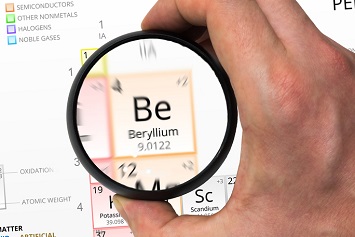OSHA’s proposed amendments to its 2017 revised standard to protect workers in general industry exposed to beryllium would not amend the two central parts of that rule—a new permissible exposure limit (PEL) for beryllium of 0.2 micrograms per cubic meter (µg/m3) of air averaged over 8 hours and a new short-term exposure limit for beryllium of 2.0 µg/m3 of air over a 15-minute sampling period. In the final rule (January 9, 2017, Federal Register (FR)), OSHA indicated that these were the maximum levels of beryllium to which workers could be exposed and still be protected from developing chronic beryllium disease (CBD) and lung cancer. The current proposal does not attempt to amend that finding.
However, the proposal is still far-reaching in how it seeks to amend other parts of the 2017 standard. Should the proposed amendments be made final, employers will find benefits in terms of burden reduction when compared to the existing standard.
While the 2017 standard applied to general industry, construction, and shipyards, the current proposal affects only those regulations applicable to general industry, a sector that accounts for about 50,000 of the 62,000 total workers OSHA says are exposed to beryllium in their workplaces. According to OSHA, the proposed amendments will “simplify or improve compliance, preventing costs that may flow from misinterpretation or misapplication of the standard” while also “maintaining safety and health protections for workers.”
Science and Cost Said to Be Questionable
The proposal is part of a settlement agreement OSHA reached with several companies. According to one of those companies, Materion Brush, a top developer of beryllium metals, in the 2017 action, “OSHA made significant changes to a number of the standard’s ancillary provisions without a sound scientific basis or a reassessment of the technical and economic feasibility resulting from such changes. These fundamental and dramatic differences from the proposed general industry standard issued by OSHA in 2015 rendered portions of the final standard unworkable without presenting any significant additional protection to workers.”
In the settlement, OSHA agreed to reset compliance deadlines, undertake a reduced enforcement program, and issue a proposal that included agreed-upon revisions.
Regulations Addressed
The proposal addresses existing regulations in the following eight areas:
- Definitions. OSHA is proposing to change or add six terms in the definitions paragraph—beryllium sensitization, beryllium work area, CBD diagnostic center, confirmed positive (regarding tests to determine beryllium sensitization), dermal contact with beryllium, and chronic beryllium disease. The new definition of beryllium work area was prompted by industry concerns that the 2017 definition could compel employers to designate entire facilities as beryllium work areas. OSHA has addressed this concern in part by proposing to amend Appendix A to provide a list of operations commonly performed while processing beryllium metal, beryllium composites, beryllium alloys, or beryllium oxides, which create the potential for exposure to airborne beryllium through the generation of dust, mist, and/or fumes. The proposed revision would define beryllium work area as any work area where materials that contain at least 0.1 percent beryllium by weight are processed during an operation listed in Appendix A, regardless of exposure level.
- Written exposure control plan. OSHA is proposing several wording changes, including removing the word “preventing” from the text to clarify that procedures for minimizing cross-contamination within beryllium work areas may not totally eliminate the transfer of beryllium but should minimize cross-contamination of beryllium, including between surfaces, equipment, clothing, materials, and articles.
- Personal protective clothing and equipment (PPE). One proposed change would clarify the trigger for when employees must remove beryllium-contaminated PPE. The second would simplify the language in the information the employer must provide to persons or businesses that clean, launder, or repair PPE.
- Hygiene areas and practices. Proposed changes here affect when the employer must provide washing facilities to employees exposed to beryllium; change rooms; and cleaning beryllium-contaminated PPE before entering an eating or drinking area.
- Disposal and recycling. Generally, OSHA is proposing that provisions pertaining to recycling and disposal also address reuse.
- Medical surveillance. The proposal would change the requirement for a medical examination from within 30 days following an employer’s determination that an employee has been exposed in an emergency to between 1 and 2 years following such exposure.
- Communication of hazards. Among the proposed changes, employers would be required to ensure that exposed employees can demonstrate knowledge and understanding of the health hazards caused by dermal contact with beryllium.
- Recordkeeping. The proposal would remove requirements to include each employee’s Social Security number in the air-monitoring data, medical surveillance, and training provisions.
The proposal was published in the December 11, 2018, FR.


